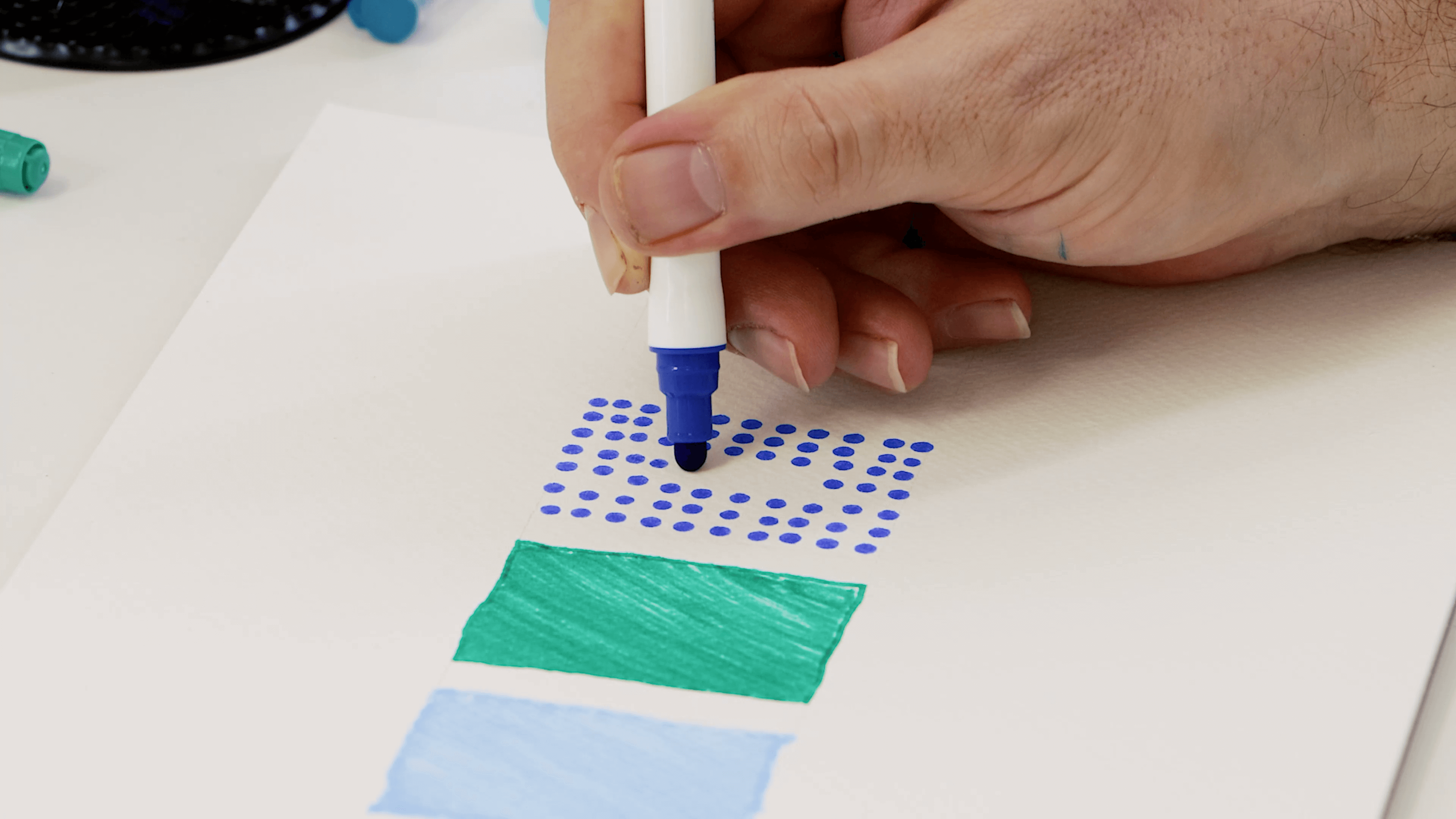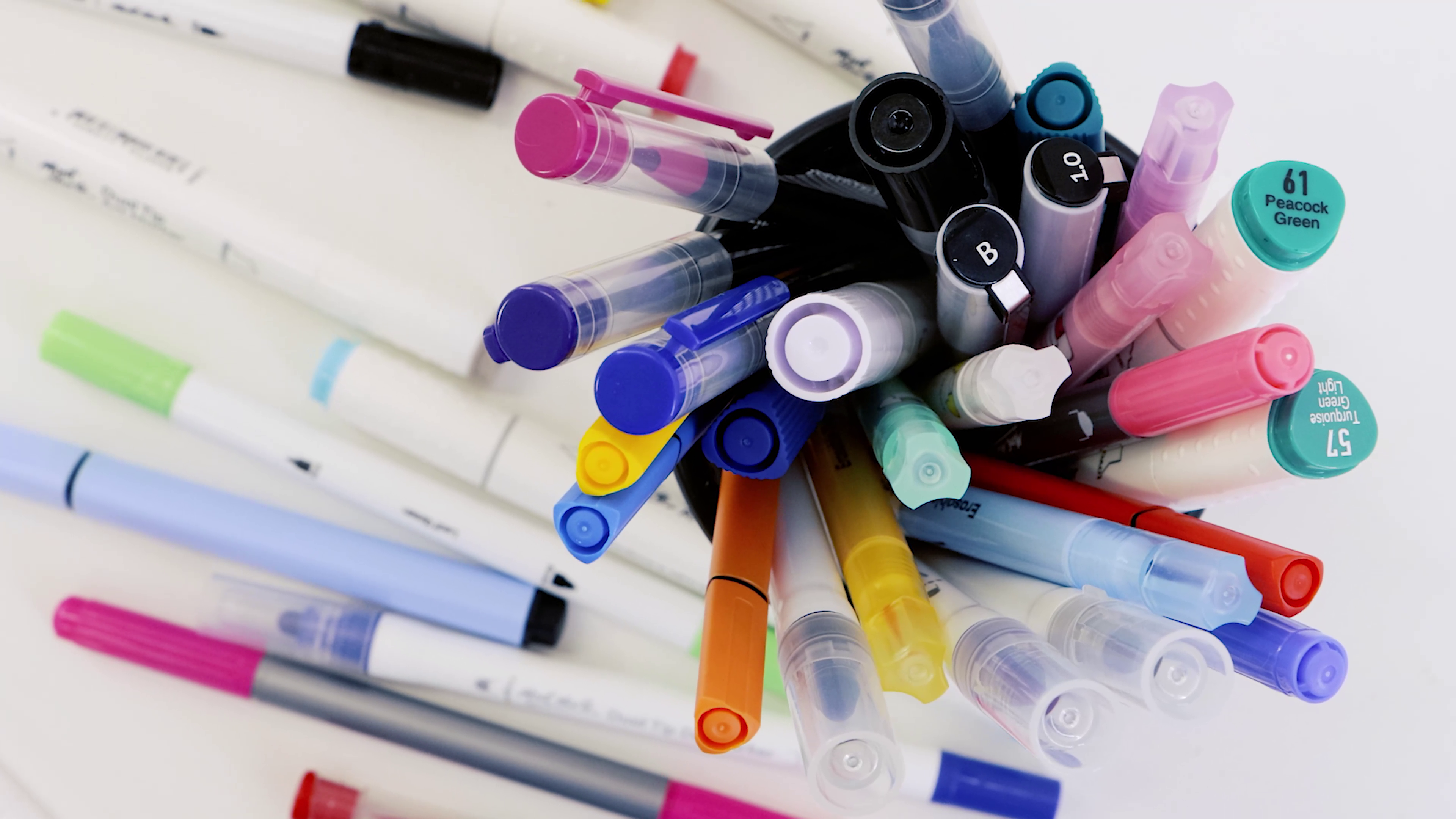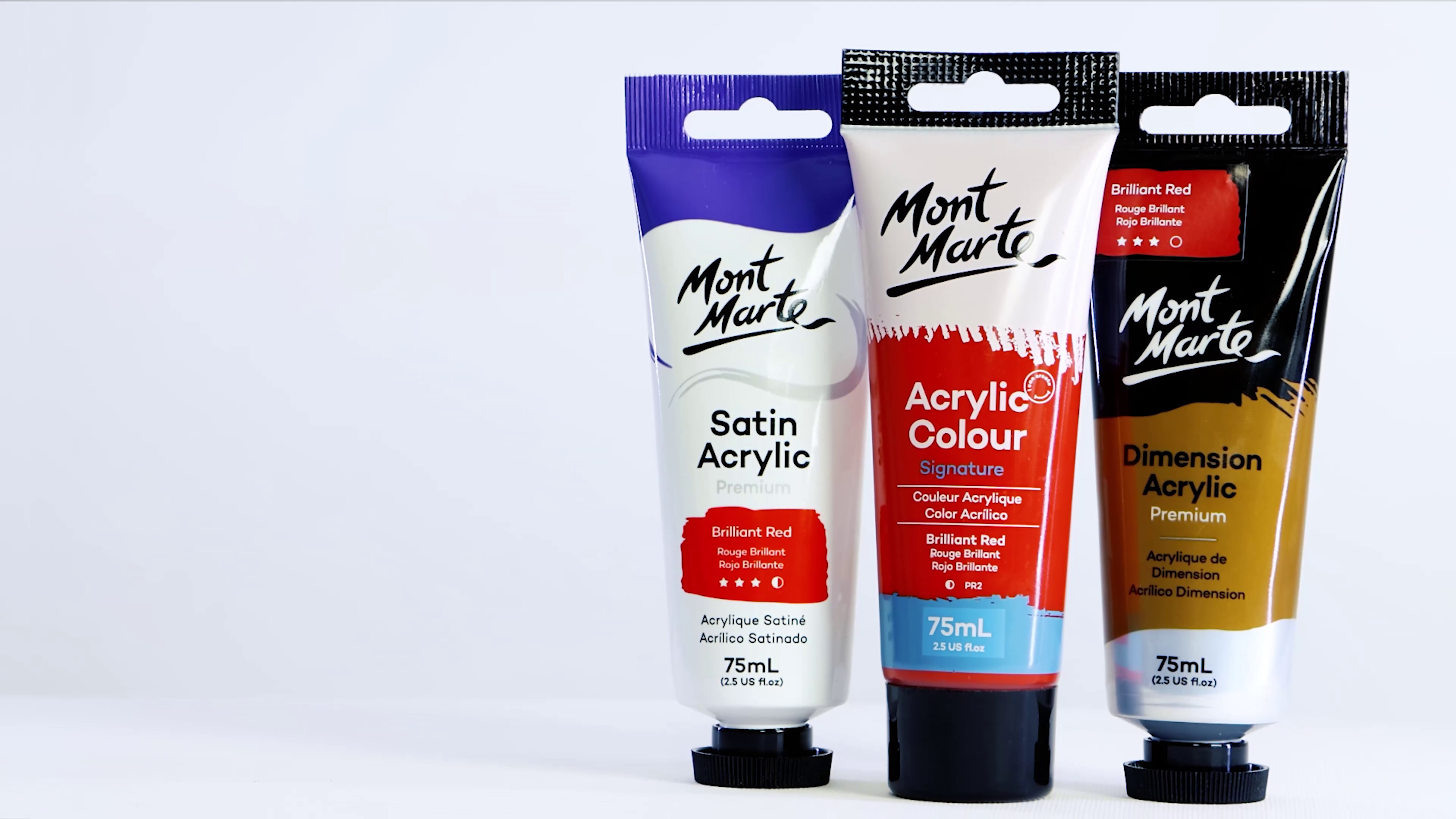Looking to dabble in art markers? From bullet tips to fine liners, finding which art marker is right for your next creative project can be confusing. In this art marker guide, we’re getting to the point and looking at marker types, tip shapes and what separates alcohol-based markers from water based markers.
Tip shapes

If we strip away the plastic casing from an art marker, you’ll see the different shapes the tip (or nib) comes in. These vary from brand and size, but the most common marker tip shapes are:
Wedge tips
A chisel or wedge shape marker. These will fill in solid areas well or the edge can be used for a finer line.
Bullet tips
These will fill in solid areas evenly, bullet tips have a good coverage too, thanks to their rounded shape.
Fine point tips
These are slightly thicker than an average pen but not quite as large as a marker. Fine point tips are measured in mm rather than the brush size.
Dot tips
A dot tip is more rounded than a bullet tip, dot tips are great for journaling, pointillism, or for stippling work.
Marker types

Next off in the art marker guide, are the marker types. These will all vary between brands but to keep things simple, let’s unpack the nine types of markers.
Fibre tip markers
When you think of markers, fibre tip markers are the ones that usually spring to mind for a lot of people. The fibre tip has a firm nib for smooth flowing ink, these nibs are usually made from plastic so they can handle a fair amount of pressure. Thanks to their durability, fibre tip markers are a great go-to for colouring, drawing and writing.
Plastic tip /fine liner markers
Though they might be small, don’t underestimate these markers. Their nibs might be little but plastic tip markers or fine liners are firm and durable with sturdy nibs making them a great choice for linework. Available in a range of sizes, if you love intricate work, fine lines and small designs, you’ll want to grab a plastic tip marker.
Brush pens
Brush pens have a flexible tip that’s usually made from resin, meaning these markers can handle pressure well. Brush pens combine a tiny paint brush with a marker, so you can create a bunch of beautiful strokes in your hand lettering, calligraphy, scrap booking and journaling.
Paint pens
What happens when you combine paint with a marker? You get a paint pen! These markers are like a fibre tip marker but instead of flowing ink, acrylic paint flows through to the nib. Paint pens are great for decorating, designing and mixed media projects and they can be used on a range of porous and non-porous surfaces like canvas, card, clay and rock.
Fabric paint pens
It'll come as no surprise that fabric paint pens are markers that flow with fabric paint instead of ink. Like paint pens they come in a variety of nib shapes from fineliners to bullets. Depending on the size of the tip, fabric paint pens can be great for covering large areas on fabrics or for adding outlines and fine lines on fabrics.
Watercolour pens
Made from water-based ink, these markers will spark joy for mixed media artists, watercolourists looking to try something new or anyone wanting to have a little play with markers. Draw, decorate or design with watercolour paper then apply water to your designs to create effects. Be sure not to dip the marker directly into water. After all, these markers are still markers at the end of the day, and placing a marker directly into water will draw the ink from the nib, breaking the marker and no one wants that.
Watercolour brush pens
Combining a watercolour marker with a brush pen marker, watercolour brush pens have a flexible brush tip and water-based ink that help create a range of strokes and watercolour effects. Watercolour brush pens are fabulous for design, hand lettering, illustration, sketching and colouring but like watercolour pens, these markers can’t be dipped directly into water, so it’s best to reach for a wet paint brush.
Dual tip markers
Get the best of both worlds with dual tip markers, one side will have a larger tip (usually a wedge tip) and a smaller tip on the other side (usually a bullet tip or a fine liner). You’ll still have the same colour, but be able to colour and cover larger areas with the chisel side then flip and outline or add detail with the finer side.
Alcohol based markers
These markers sound a little daunting but alcohol based markers don’t have to be scary. Alcohol based markers come in a range of nib sizes and colours, but mostly instead of using water-based ink, they use alcohol, meaning, the ink flowing from the marker is waterproof and permanent on a range of surfaces. So if mixed media is your preferred way of working or you want something that won’t rub away your designs, alcohol based markers will keep your creations locked and loaded.
Erasable markers
Erasable markers are a great way to experiment, note take and not have the stress of using a permanent marker. With a marker on one end and an eraser on the other, it’s easy to remove any accidental lines with these markers.
Blendability
How do alcohol and water based markers stack up against one another? Let’s compare the blendability between both options.

Alcohol based markers:
These markers are quick drying and waterproof once dry. Alcohol based markers can be blended with a marker blender to soften edges and lighten.
Water based markers:
These markers take a little longer to dry but they can be blended with water on a brush to create watercolour effects.
We hope this art marker guide inspires you to pick up some markers and create something new. Try them for yourself and #montmarteart or tag us @montmarteart on Instagram or Facebook, we’d love to see what you create with your markers.





































